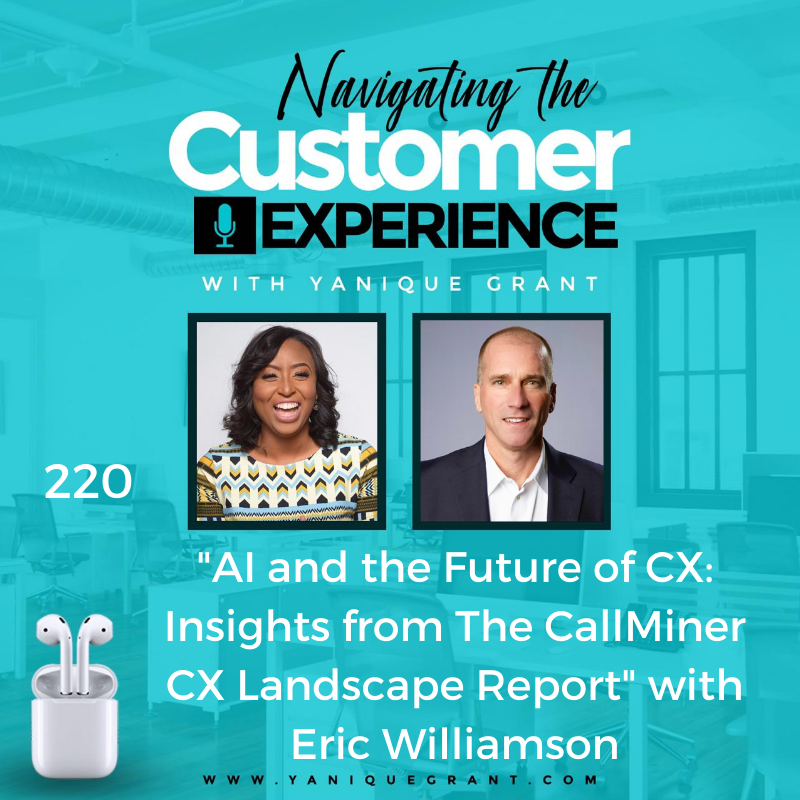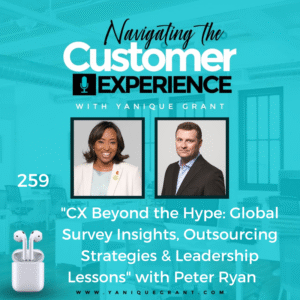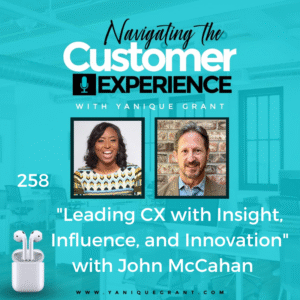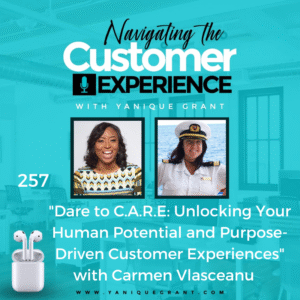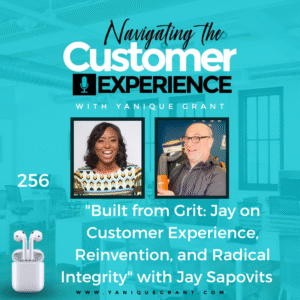Eric Williamson is the Chief Marketing Officer at CallMiner. As CallMiner’s Chief Marketing Officer, Eric oversees all global marketing functions from brand and events to demand generation. Eric’s marketing team works very closely with channel and sales to drive pipeline and CallMiner’s explosive growth. Eric has over 20 years of experience in both technology and consumer products marketing from both the vendor and agency side.
Before joining CallMiner, Eric was VP Brand & Digital Marketing at Acquia – an open DXP platform built around Drupal – where he led brand, creative services, webops, editorial, and demand generation. Prior to Acquia, Eric was on the agency side of marketing working as SVP Digital & Social Media at MullenLowe, and before that as VP Digital Strategy at The Martin Agency.
During his career, Eric has worked with a variety of B2C and B2B brands including Google, Microsoft, Intel, GEICO, Walmart, P&G, Pizza Hut, Acura, Royal Caribbean, and Hyatt. He earned his undergraduate degree from Texas A&M University, and an MBA from The University of Texas at Dallas.
Questions
· Could you share in your own, how it is that you got from where you were to where you are today?
· Now, could you share with our listeners what is CallMiner and what exactly do you do?
· The CallMiner CX Landscape Report, could you share with our listeners, I would say maybe three to five of the top themes or insights that we were able to garner from that data and that report?
· What are your views as it relates to how leaders are actually utilising the CX data? Are they supporting and using it to make data driven decisions? Or is it just one of those reports that’s generated and is there as a KPI but you’re not really doing anything with the information.
· Now, could you share with us what’s the one online resource, tool, website or app that you absolutely can’t live without in your business?
· Could you also share with us maybe one or two books that you’ve read, it could be a book that you read recently, or even one that you read a very long time ago, but to this day, it still has had a great impact on you.
· Now, could you also share with our listeners, Eric, what’s the one thing that’s going on in your life right now that you’re really excited about? Either something you’re working on to develop yourself or your people.
· Where can listeners find you online?
· Now, Eric, before we wrap our episodes up, we always like to ask our guests, do you have a quote or saying that during times of adversity or challenge you will tend to revert to this quote if for any reason you got derailed or you got off track, this quote kind of helps to get you back on track.
Highlights
Eric’s Journey
Me: Now, before we jump into the conversation, I always like to give our guests an opportunity to share a little bit about their journey. So, could you share in your own words, how it is that you got from where you were to where you are today?
Eric shared that Yanique did a pretty good job of covering his bio and in her intro, so thank you for that. So, he started his career out as essentially a BDR or an SDR is what they’re called, typically, at least in SaaS, which he thinks is one of the best first jobs you can have, especially if you have aspirations of doing something in either sales or marketing. So, you talk to a tonne of CMOs, who that was their first job as well, so that’s where it started.
He spent a lot of time working in digital advertising and then ultimately integrated big agency advertising for a lot of big brands and then flipped over to the client side and worked at a tech company called Acquia, which was covered just briefly in that intro. It’s an open DXP player, built on top of Drupal, which is an open source project. And essentially, think of it is an open source competitor to something like Adobe Experience Manager. So, spent three or four years at Acquia.
And after that was introduced to the CEO at CallMiner, and had a lot of great discussions and he has been at CallMiner as their Chief Marketing Officer since 2020. And they’ve had a really nice run so far, they’ve gone from about 40 million ARR to a little over 80. And they’re still seeing some nice growth despite maybe some of like macroeconomic headwinds.
What is CallMiner?
Eric shared that CallMiner, they are the leader in conversation intelligence, specifically focused in more on customer service. So, if you think of any large company that has one or more large customer service agents, contact centres. So, they’ll utilize their platform to ingest, so record and analyze every single customer interaction, whether that be a phone call to a customer service agent, texts to and from an agent, chats with an agent, survey data, all of that gets analyzed, and it’s able to then turn around in real time and provide that customer service agent with guidance on to how to be able to deliver a better customer experience, guidance on how to answer the questions or access resources better. And then ultimately, if you’re able to mind through millions of customer interactions, there’s extremely valuable insights that can be discovered. And so, through machine learning in their artificial intelligence, their platform delivers that which is the larger value proposition.
The CallMiner CX Lanscape Report and the Insigts Garnered From That Data
Me: Alright, thank you for sharing that information on CallMiner. In leading up to the interview with you, Eric, I was shared a copy of the report, The CallMiner CX Landscape Report, and I’m sure you’re familiar with it right as the Chief. So, could you share with our listeners, I would say maybe three to five of the top themes or insights that we were able to garner from that data and that report?
Eric stated that first and foremost, the CX Landscape Report that Yanique’s referencing, it’s an annual report that they publish so, it’s original research for them. So, they do a survey of 700 plus CX and contact centre leaders across the globe and then what they’ll try to do is keep a lot of those questions the same year over year as new trends and topics tend to emerge, they’ll introduce a few new questions, but that way they’re able to ultimately keep a pulse on what is important, and what sort of trends they’re seeing with CX and contact centre leaders across the globe.
In this particular one, so in the one that they published in late 2023, obviously, and this is not going to shock anyone but one of the biggest topics that was not new but he would say the focus on it was extremely heightened, is around artificial intelligence, you’d have to be living under a rock to not notice just the media firestorm around artificial intelligence, in particular generative AI in 2023 and even today.
A lot of the typical data that they’ll look at in that report, and the findings have to do with, like he said, trends that contact centre professionals and CX professionals are seeing within their own organizations. But he would highlight a few specific findings around artificial intelligence since that seemed to be the dominant theme. What’s interesting is couple of themes would be that nearly this is not going to shock anybody, but nearly all of them are looking to implement some aspect of artificial intelligence in the next 12 to 18 months. The interesting sub stat to that is of those, over half aren’t really sure what they’re supposed to do basically, they know they need it, whether they were told this or whether they inherently think they need artificial intelligence in some way. So, they’re investigating it, but they are a little bit lost in terms of where exactly to apply it. So, that was one of the first overarching thematics is everybody wants it, but they’re not sure what to do with it.
The next is, now that we’ve moved a little bit beyond, maybe like the hype cycle of all of this, where he thinks everybody is rushing to go do something, and you’ve got a little bit of fear of missing out. Now they’ve started moving into the stage where companies are actually starting to try and implement some of these things. And what they’ve moved into now is sort of the reality stage, which is they’re starting to realize that there’s some risk inherently with this, largely around compliance, around the protection of their brand. Because sometimes these generative AI models can have hallucinations, etc. So, he thinks they’re getting into the reality stage of actually trying to implement it and realizing that you have to take a much more responsible approach to how we think about this, and that there is no AI silver bullet out there that’s going to solve all of your CX problems.
The last one, and the underlying aspect of this is actually something that they have heard, even before they started digging deeper into AI trends for CX leaders, and that has to do with how CX is positioned among the entire company/organization. So, in many cases, CX is disconnected from the contact centre, which is never good. Or you’ve got CX that is its own central thing, your meeting, you’ve got CXO, you’ve got a team. And then in other cases, CX is sort of sprinkled in multiple departments. And so what this kind of leads to is a bit of a disconnect, in terms of how you can roll out properly something as expansive as artificial intelligence within a piece of software across all these different pieces that are somewhat disconnected within the organization.
The other thing it leads to is let’s say you’ve got a contact centre, and you’ve got all this amazing data, because of the disconnections here, some of that incredible data coming out of all these customer interactions is never actually making it further than the contact centre because of those disconnects. So, the last theme has to do with how companies typically will measure CX or a voice of the customer programme. He thinks as everybody who might be listening to this podcast know CX when it all comes down to it is largely has grown up and is still inherently based on surveys. So, whether it be an NPS or CSAT survey, but these are solicited surveys, solicited answers from a survey which sometimes can be very polarizing.
The big opportunity and where he think the industry is going is to combine that survey data with unsolicited data. And so this would be the data that comes out of contact centres and customer service centres, actual conversations that have a motion that we can measure versus solicited questions and answers. So, he thinks the combination of those two is where CX in general is going. And what you’ll find is companies that are a little bit more mature and have a better org structure are already tapping into some of that data out of their contact centre.
Me: Wow, that’s amazing. I think that’s a great idea to merge the data that is collected from people who are actually talking to customers on a daily basis. I mean, the reality is, in a contact centre, customers only call for two reasons, right, to make a complaint or to make a request, there is no other reason why they’re calling.
Eric agreed, that’s correct. So again, you think of like, put it in the consumer perspective, other than the major influencers, when you go put something on a review about a hotel you stayed at or about some restaurant you went to on Yelp, largely it’s because it was either an amazing experience that you just can’t help yourself, or it was such a bad experience that you just can’t help yourself. So, it becomes polarizing, which is why using surveys only is flawed to truly measure CX.
How Leaders Utilize CX Data
Me: Now, what do you think leaderships’ role is? Being in the industry and also being in marketing with a lot of exposure working with different organizations, what are your views as it relates to how leaders are actually utilizing the CX data? Are they supporting and using it to make data driven decisions? Or is it just one of those reports that’s generated and is there as a KPI but you’re not really doing anything with the information.
Eric stated that if you look at their CX landscape report or talk to most large companies, for the most part, they’re using CSAT score which is survey based, or an NPS score as kind of a one metric, if you got all the way up to the CEO level that they’re looking at on a regular basis to measure sort of the barometer of where their customer experience offering is at this point.
He thinks to the question as a whatever a marketing leader in his case, one of the main things that they’re responsible for is helping to better align the organization to where the right data is making its way up, helping to make sure that data is organized in a way that a CEO or a Chief Product Officer, which is another beneficiary of a lot of this unstructured data and the insights from it, or even in many cases, the CMO for him isn’t able to get the insights, the root cause of understanding what some of these issues might be that they’re trying to solve for.
So, he thinks aligning the organzsation so that the data can reach the right people, and then making sure that data is packaged up in the right way to where it is executive friendly in some of the things that a leader should be thinking about and trying to make this better.
Me: And I can imagine also not just spitting out scores in terms of X percent of this type of customer feels this way, but linking it to tangible things, especially for leaders who think in dollars and cents, if we have a decline in this particular area over x period of time, what will this mean for our bottom line? What does it mean for future initiatives and innovation that we may need to implement? So, I would imagine that would be the kind of mindset they’d have to have.
Eric agreed, absolutely, excellent point. And even if as a first step you’re continuing to just use NPS and CSAT, you should have an understanding to your point, by looking at all of your forecasting and previous years financials, you should be able to point to an increase in one point is going to result in this much the bottom line. So, he definitely agree with that point.
App, Website or Tool that Eric Absolutely Can’t Live Without in His Business
When asked about an online resource that he can’t live without in his business, Eric shared that sadly, probably the calculator on his phone just because he’s constantly needing to tally up the percentages in different stats as he’s doing some of his own reporting at an executive level, he must open that thing up several times a day.
From a website standpoint, they utilize the analyst reports quite a bit. So Forrester, who is one of the top tier analysts and the one who issued out the Forrester Wave that they’re a leader in, so, he utilize them quite a bit from a research standpoint so that they can get a better understanding of where they predict the industry is going. So, he definitely tap into Forrester and Gartner quite a bit for that.
And then from a marketing standpoint, and Demand Gen. So, they have several vendors that they work with, so 6sense for their ABM intent platform, Outreach for their BDR platform. And he finds that some of the best resources that they can utilize for training for those particular teams. So, he spent some time looking through their most recent thought leadership and training materials to try and identify how he can help his team get better.
Books that Have Had the Biggest Impact on Eric
When asked about books that have had a great impact, Eric stated that he would say from a business standpoint, so separate out fiction from a business standpoint, he thinks some of the classics like Good to Great: Why Some Companies Make the Leap and Others Don’t by Jim Collins, probably some of the ones that resonated with him the most and still, you can go back and reference. When he flip over to that sort of pleasure reading fiction, Great Gatsby by F. Scott Fitzgerald has always been his favourite book. It’s not a long read probably one of the reasons why, but he thinks he must have read that book 50 times.
What Eric is Really Excited About Now!
When asked about something that he’s excited about, Eric stated just keeping it focused around CallMiner, his company and his team. He thinks one of the things that he’s really excited about is all of them that are in tech SaaS, they really had a rough 2023, whether it be, layoffs in terms of correction on over hiring and 2021. But mostly, a lot of this is coming from just general macro conditions, macroeconomic conditions globally.
He thinks what he’s excited about is towards the end of 2023, they started to see a light at the end of the tunnel and sent some positive signals that they’re turning the corner a bit, which he thinks anyone who works in tech should be excited about. He’ll be interested to see how Q1 and maybe Q2, go for 2024 to see if that continues to more positive signals, and they start to see their prospects and their customer base be a little less cautious with their budgets and a little less conservative and be willing to maybe do some expansion and some testing within the platforms that they offer. So, he’s excited about that. And he thinks most tech companies are right now.
Where Can We Find Eric Online
Website – www.callminer.com
LinkedIn – CallMiner
Quote or Saying that During Times of Adversity Eric Uses
When asked about a quote or saying that he tends to revert to, Eric stated that he doesn’t know if this would be adversity, but they’re constantly he feels like they’re in the midst of adversity when they’re trying to roll new campaigns out, roll new products out to the market. And something that he and several of his other C level peers, “Perfection is the enemy of progress.” So, he thinks it’s very easy to get in your own way, and try to make something so perfect that you know it’s going to be success and that’s just a fallacy. And it’s much better to do all the due diligence, do all the work to make it as good as you can. But get it out there and then learn from it early and make some changes to it than it is to just be unrealistic that you’re going to be able to perfect something before you launch it.
Me: True. That’s a very good quote. Excellent point.
Eric stated that he doesn’t know who to attribute that quote to, by the way, but somebody wrote it.
Me: Well, Eric, I just want to tell you, thank you so much for taking time out of your very busy schedule and hopping on our podcast, and sharing all of this great content as it relates to what CallMiner does, about the report that your company had published that you publish on an annual basis and the great insights that were able to be derived from it, as well as moving forward what organisations can look towards in terms of where they should be placing their energy in order to be yielding the greatest success as it relates to customer experience. So, just want to extend greatest level of gratitude. Thank you so much.
Please connect with us on Twitter @navigatingcx and also join our Private Facebook Community – Navigating the Customer Experience and listen to our FB Lives weekly with a new guest
Links
• Good to Great: Why Some Companies Make the Leap and Others Don’t by Jim Collins
• Great Gatsby by F. Scott Fitzgerald
The ABC’s of a Fantastic Customer Experience
Grab the Freebie on Our Website – TOP 10 Online Business Resources for Small Business Owners
Do you want to pivot your online customer experience and build loyalty – get a copy of “The ABC’s of a Fantastic Customer Experience.”
The ABC’s of a Fantastic Customer Experience provides 26 easy to follow steps and techniques that helps your business to achieve success and build brand loyalty.
This Guide to Limitless, Happy and Loyal Customers will help you to strengthen your service delivery, enhance your knowledge and appreciation of the customer experience and provide tips and practical strategies that you can start implementing immediately!
This book will develop your customer service skills and sharpen your attention to detail when serving others.
Master your customer experience and develop those knock your socks off techniques that will lead to lifetime customers. Your customers will only want to work with your business and it will be your brand differentiator. It will lead to recruiters to seek you out by providing practical examples on how to deliver a winning customer service experience!

